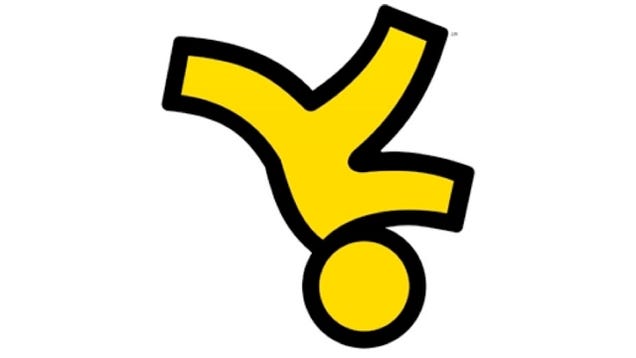The dial-up sound, still one of the most recognizable sounds, was a true product of the 90's. As much as we embraced dial-up internet, we loathed it as well. The commercial web was in it's infancy, and we all wanted to be on it. The easiest and cheapest method was dial-up. Dial-up made AOL king. And it made you miss important phone calls. While dial-up was famous for it's distinct sound, it was infamous for it's speed. Why was dial-up so slow, and why did we tolerate it? If it was so slow and so clunky, how did it turn AOL into one of the biggest success stories of the new millennium?
First, it needs to be understood how dial-up worked. Dial-up utilized your telephone line. Anyone who had dial-up had a modem. A modem connected your telephone line with your computer, and allowed the analog signals from the telephone line to be transformed into digital signals, which your computer could read. When trying to initiate dial-up, your modem would "talk" to a remote modem until they could get on the same page. The famous dial-up sound was this process in action. Once the modems were in sync, your modem would mute itself, allowing for data to now be sent through.
Dial-up brought to life the former giant known as AOL. AOL began offering online access in 1993, and then boomed along with the world wide web. In 2001, AOL and Time Warner merged. That merger didn't last long and is now considered one of the worst big business mistakes of all time. The "always on" broadband emerged, and AOL and Warner were stubborn, never taking full advantage. Other than their email and dial-up service, AOL never took full advantage of what they had. AOL still exists and millions still use its email, including me, but it is now owned by Verizon and operates as a digital media company.
That's AOL's story, but what about dial-up? How did the end begin? Well, dial-up internet had two major drawbacks. First, download speeds were limited to 56 kilobytes per second. This speed is called "bandwidth." Typical Wi-Fi today averages around 24 mega-bytes per second. One megabyte is 1024 kilobytes. Downloading Pokemon Go onto your computer with dial-up would take 6 hours and 47 minutes. With today's Wi-Fi, Pokemon Go would take about a minute. A typical song on Itunes today would take a few seconds, if not instantaneously. With dial-up, you'd be sitting around for about 20 minutes. What about the new Batman vs Superman movie? With standard Wi-Fi, a little over 30 minutes. With yesterday's dial-up? Over 11 DAYS. Yes, days with a D. Even the non HD-version of the movie would take over 4 days and 21 hours.
The second main issue of dial-up was the need to hog the phone line. When people were connected, incoming and outgoing calls could not be made. Whenever you wanted to order a pizza, needed to check on Nana, or wanted to call the local movie theater to get showtimes (remember that?), you had to stop what you were doing and log off. If you were expecting an important call, you had to sit and wait before you could log on and connect to the web. Special modems and secondary phone lines were available, but who had time for that?
The second main issue of dial-up was the need to hog the phone line. When people were connected, incoming and outgoing calls could not be made. Whenever you wanted to order a pizza, needed to check on Nana, or wanted to call the local movie theater to get showtimes (remember that?), you had to stop what you were doing and log off. If you were expecting an important call, you had to sit and wait before you could log on and connect to the web. Special modems and secondary phone lines were available, but who had time for that?
In fairness to dial-up, downloading 150 minute HD movies is not what it was made for. Back in the late 90's and early 00's, the heyday of dial-up, the web was still in web 1.0. Web pages weren't sophisticated; they were static. Web pages didn't offer all the pictures and graphics, videos and animations that they do today. The original website for Space Jam is actually still online; look how sophisticated it is/was! This was Yahoo in 2000. This is Yahoo in 2016. Downloading movies online wasn't a thing (even DVD's hadn't yet passed the popularity of VHS tapes yet), Napster was in and out of business, and the Itunes Store wasn't open for business until 2003. There was no social media or streaming or online gaming. The web was limited and it fitted the limited dial-up perfectly.
Other issues with dial-up was that it wasn't "always on", meaning every time you wanted to connect, you literally had to connect. That was done by dialing the ISP (that's the funky alien sound you would hear), which could take minutes. Plus you had to sit and listen to that sound. Connections were also known to drop out, and your connection would be lost if your telephone cord was accidentally disconnected.
Dial-up lost ground to broadband in the mid-2000's and was left in the dust. As we transitioned into web 2.0 and 3.0, dial-up wasn't able to handle the load. Believe it or not, dial-up does still exist. In 2015, over 2 million people still payed for AOL's dial-up, and it is still offered by other companies such as NetZero. Dial-up may never fully go away, but it's never coming back either. As obsolete as dial-up is, it was truly apart of 90's lore, and we'll never forget the memories it brought us, allowing us to connect to the infant web.
PS, does anybody remember Netscape? It was on all the computers in elementary school, but we never used it. Well, shout out to Netscape.

No comments:
Post a Comment